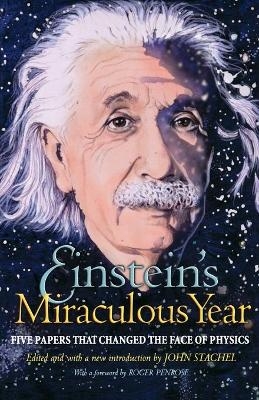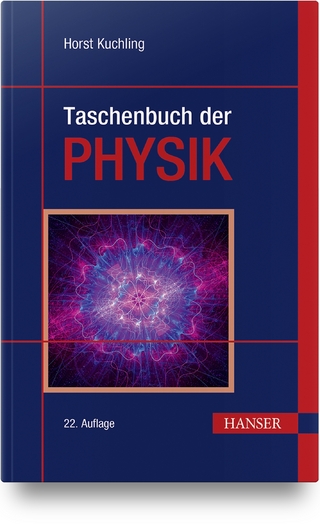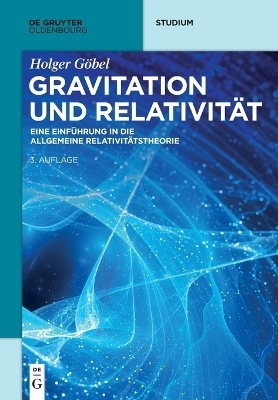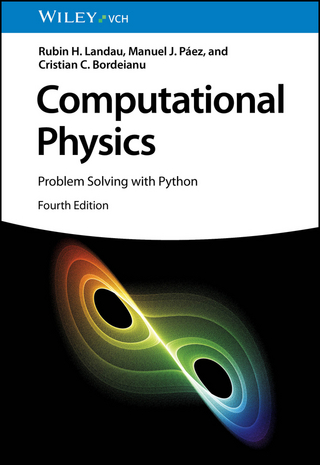
Einstein's Miraculous Year
Princeton University Press (Verlag)
978-0-691-12228-1 (ISBN)
After 1905, Einstein's miraculous year, physics would never be the same again. In those twelve months, Einstein shattered many cherished scientific beliefs with five extraordinary papers that would establish him as the world's leading physicist. This book brings those papers together in an accessible format. The best-known papers are the two that founded special relativity: On the Electrodynamics of Moving Bodies and Does the Inertia of a Body Depend on Its Energy Content? In the former, Einstein showed that absolute time had to be replaced by a new absolute: the speed of light. In the second, he asserted the equivalence of mass and energy, which would lead to the famous formula E = mc2 . The book also includes On a Heuristic Point of View Concerning the Production and Transformation of Light, in which Einstein challenged the wave theory of light, suggesting that light could also be regarded as a collection of particles. This helped to open the door to a whole new world--that of quantum physics. For ideas in this paper, he won the Nobel Prize in 1921. The fourth paper also led to a Nobel Prize, although for another scientist, Jean Perrin.
On the Movement of Small Particles Suspended in Stationary Liquids Required by the Molecular-Kinetic Theory of Heat concerns the Brownian motion of such particles. With profound insight, Einstein blended ideas from kinetic theory and classical hydrodynamics to derive an equation for the mean free path of such particles as a function of the time, which Perrin confirmed experimentally. The fifth paper, A New Determination of Molecular Dimensions, was Einstein's doctoral dissertation, and remains among his most cited articles. It shows how to calculate Avogadro's number and the size of molecules. These papers, presented in a modern English translation, are essential reading for any physicist, mathematician, or astrophysicist. Far more than just a collection of scientific articles, this book presents work that is among the high points of human achievement and marks a watershed in the history of science. Coinciding with the 100th anniversary of the miraculous year, this new paperback edition includes an introduction by John Stachel, which focuses on the personal aspects of Einstein's youth that facilitated and led up to the miraculous year.
John Stachel is Professor of Physics Emeritus at Boston University, where he directs the Center for Einstein Studies. Roger Penrose is Emeritus Rouse Ball Professor of Mathematics at the University of Oxford and holds a regular visiting appointment at the Pennsylvania State University, where he is Francis R. Penz and Helen M. Penz Distinguished Professor of Physics and Mathematics.
ForewordPublisher's PrefaceIntroduction3Pt. 1Einstein's Dissertation on the Determination of Molecular Dimensions29Paper 1A New Determination of Molecular Dimensions45Pt. 2Einstein on Brownian Motion71Paper 2On the Motion of Small Particles Suspended in Liquids at Rest Required by the Molecular-Kinetic Theory of Heat85Pt. 3Einstein on the Theory of Relativity99Paper 3On the Electrodynamics of Moving Bodies123Paper 4Does the Inertia of a Body Depend on Its Energy Content?161Pt. 4Einstein's Early Work on the Quantum Hypothesis165Paper 5On a Heuristic Point of View Concerning the Production and Transformation of Light177
| Erscheint lt. Verlag | 17.4.2005 |
|---|---|
| Vorwort | Roger Penrose |
| Zusatzinfo | 5 halftones |
| Verlagsort | New Jersey |
| Sprache | englisch |
| Maße | 140 x 216 mm |
| Gewicht | 28 g |
| Themenwelt | Naturwissenschaften ► Physik / Astronomie |
| ISBN-10 | 0-691-12228-8 / 0691122288 |
| ISBN-13 | 978-0-691-12228-1 / 9780691122281 |
| Zustand | Neuware |
| Haben Sie eine Frage zum Produkt? |
aus dem Bereich


